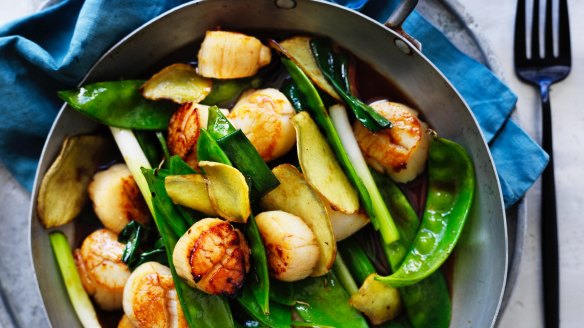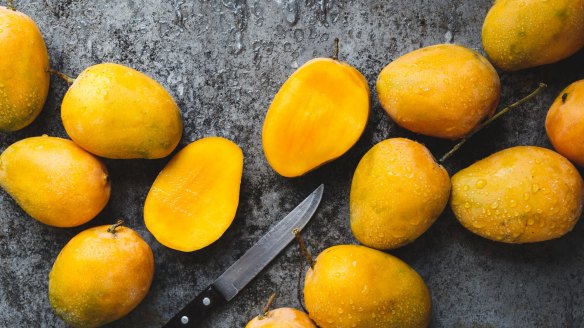Why do chefs remove the roe from scallops?

Why do chefs remove the roe from scallops? J. Pollard
Because they look better on Instagram. A plump, squat cylinder of white mollusc meat sitting neatly on a plate is aesthetically more appealing without its reproductive organs hanging out to one side. Since the nouvelle cuisine movement of the 1980s, chefs have increasingly been removing that orange, crescent-shaped organ. The roe is tasty, actually tastier than the scallop adductor muscle – the round white bit. Saucer scallops are most often sold without the roe. These are scallops harvested in waters off the northern coasts, mainly north of Brisbane. Sold on the half shell, they are often snap-frozen. The roe is particularly delicate and softens when frozen, so processors remove it before freezing. Commercial scallops, also known Tasmanian, sea or king scallops, are larger and harvested in southern waters. These have deeply coloured roe, and are often sold intact. When buying scallops, look for ones that look slightly sticky. Imported scallops are sometimes soaked in water treated with chemicals to make them hold more water and look very shiny. A classic way of cooking them is to coat them in seasoned flour and gently fry them in butter in a pan over medium heat for a few minutes each side until just done. They're delicious with a textural white wine such as French-style sauvignon blanc or pinot grigio.

How do I freeze mangoes? M. White
Remove the cheeks with a sharp knife. Peel. Wrap in cling film. Place flat on a tray in a single layer and freeze. Remove from freezer and place in an airtight plastic bag. Remove the air, seal and return to the freezer. Use within six months. Dice while frozen and use for smoothies, sorbets and daiquiris.
What is happening to ice-cream these days? Some brands do not call it that anymore and they certainly do not taste like the good old creamy stuff. J. Hart
That is because some of the frozen white stuff sold in tubs is not ice-cream. Real ice-cream is packed with fat and sugar and therefore tastes so good. Under the Australian Food Standard, to be called "ice-cream" the product needs to contain a minimum of 10 per cent milk fat and no less than 168 grams of food solids per litre. Some products contain less than the 10 per cent fat or may contain so much air that they can't meet the minimum requirements of the standard. Instead they take on names better suited to far-right political movements such as "White & Light" and "Real Vanilla Nut Free".
Letters
Recently we suggested to a reader that the one kitchen appliance you should give an adult child on leaving home would be a knife. Y. Simpkin was vehemently opposed to that suggestion, perhaps from experience, writing, "No way give your kids an excellent knife when they leave home. It will be lost, stolen, abused by house mates, remain blunt." In regard to using alcohol in Christmas baking I. Painter wrote, "My beloved is making our Christmas cakes using the traditional family recipe and, following your sage advice, has substituted a cup of Captain Morgan's Black Spiced Jamaican Rum in place of the usual cup of McWilliams Sweet Sherry called for in Aunty Bebe's recipe."
Send your vexing culinary conundrums to brainfood@richardcornish.com.au or tweet to @realbrainfood.
Appears in these collections
- More:
- Food
- Brain food
